What England’s tallest mountains lack in overall height compared to many of Earth’s other popular mountain ranges, they more than make up for in splendor. The country’s well-known Lake District National Park is home to a number of tightly-clustered ranges that are unique in terms of their proximity. Hikers can spend a day or two to summit several of the country’s tallest peaks in a single trip and take in the magnificent views that these ancient mountains have to offer.
In this article, we’ll highlight England’s top five tallest mountains and their relationships to each other. We’ll also talk about some of the features, life, and history that make each of them unique.
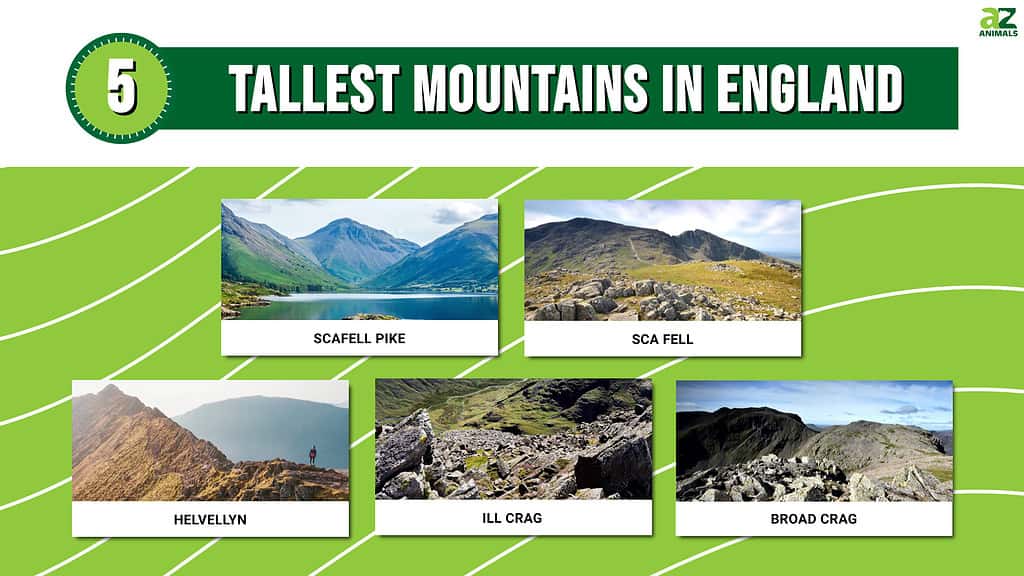
Scafell Pike – 3,209 ft. (978 m)
The tallest mountain in England, Scafell Pike, towers 3,209 feet above sea level. This mountain, located in the country’s Lake District National Park is a popular destination for hikers and wildlife observers alike. Miles of trails of varying difficulty lead visitors through deep valleys and steep, rocky terrain. Those that reach the peak are rewarded with astounding views of the surrounding country, able to see great distances. Other mountains in Wales, Ireland, and Scotland, hundreds of miles away, are clearly visible from the top, weather permitting.
Scafell Pike is made up of igneous rock, meaning that it was formed as the result of ancient volcanic action. The terrain is rough and rocky, home to shattered stone and large boulder fields. The mountain is also home to the country’s highest body of water, Broad Crag Tarn. The small lake, which strangely shares its namesake with one of England’s other tallest mountains, is only about a quarter-mile from the Scafell Pike summit. There, it sits about 2,700 feet above sea level.
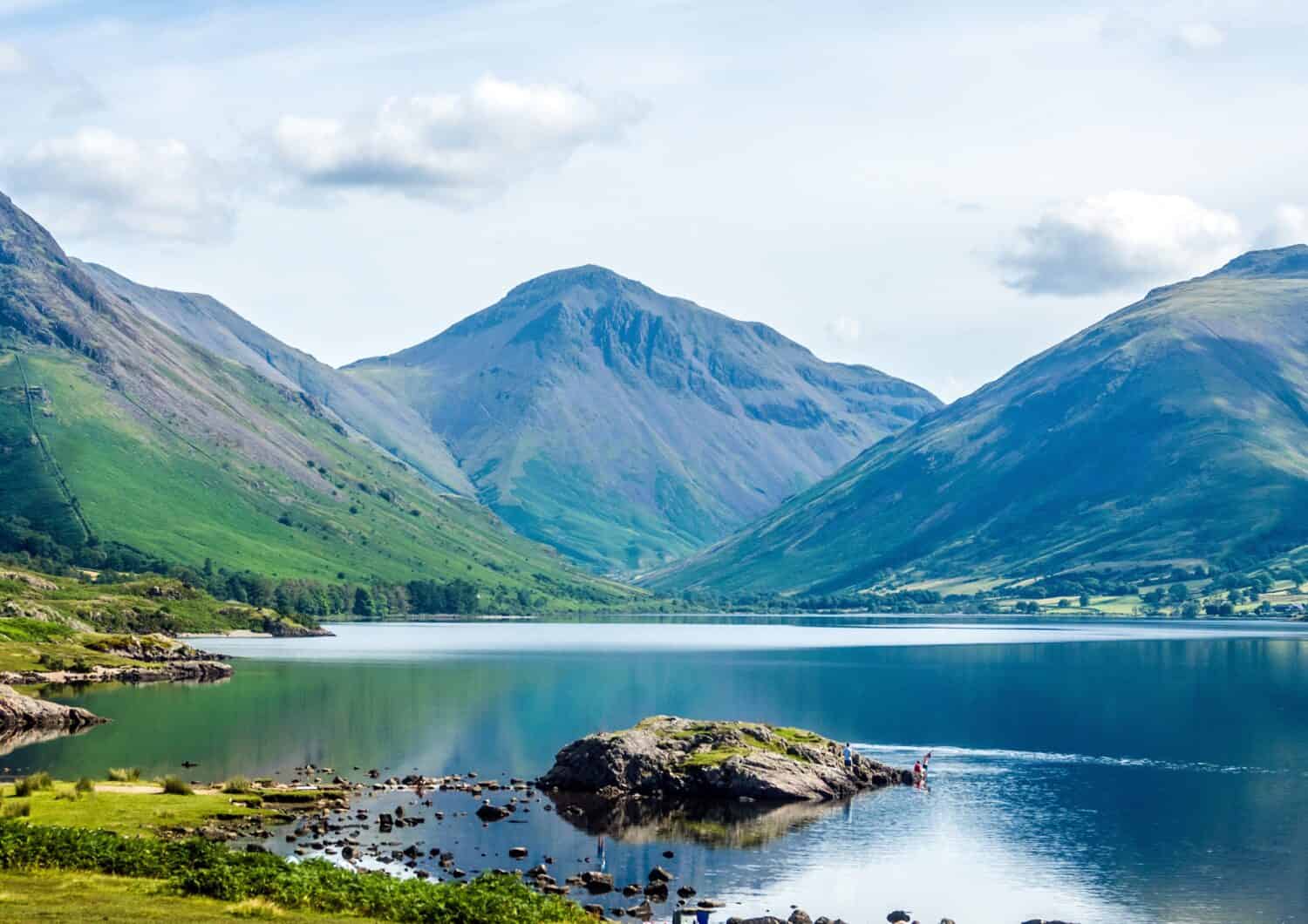
A distant view of Scafell Pike from the west, looking across England’s deepest lake: Wast Water.
©nikonpete/Shutterstock.com
Sca Fell – 3,163 ft. (964 m)
Though from some angles the peak of Sca Fell appears taller than that of Scafell Pike, it is in fact just over 50 feet lower in elevation. That makes it the second tallest mountain in England standing at 3,163 feet.
Also in the Lake District, Sca Fell sits very near Scafell Pike. The two mountains are joined by Mickledore, a long, narrow ridge that creates a distinct dip in the mountains’ silhouette. Crossing the long ridge between the mountains isn’t overly difficult. The toughest part is the ascent, or descent depending on the direction you’re heading, of Broad Stand. This rocky buttress gives many hikers a true run for their money. Slippery when wet and always very steep, traversing it successfully requires care, skill, and perseverance.
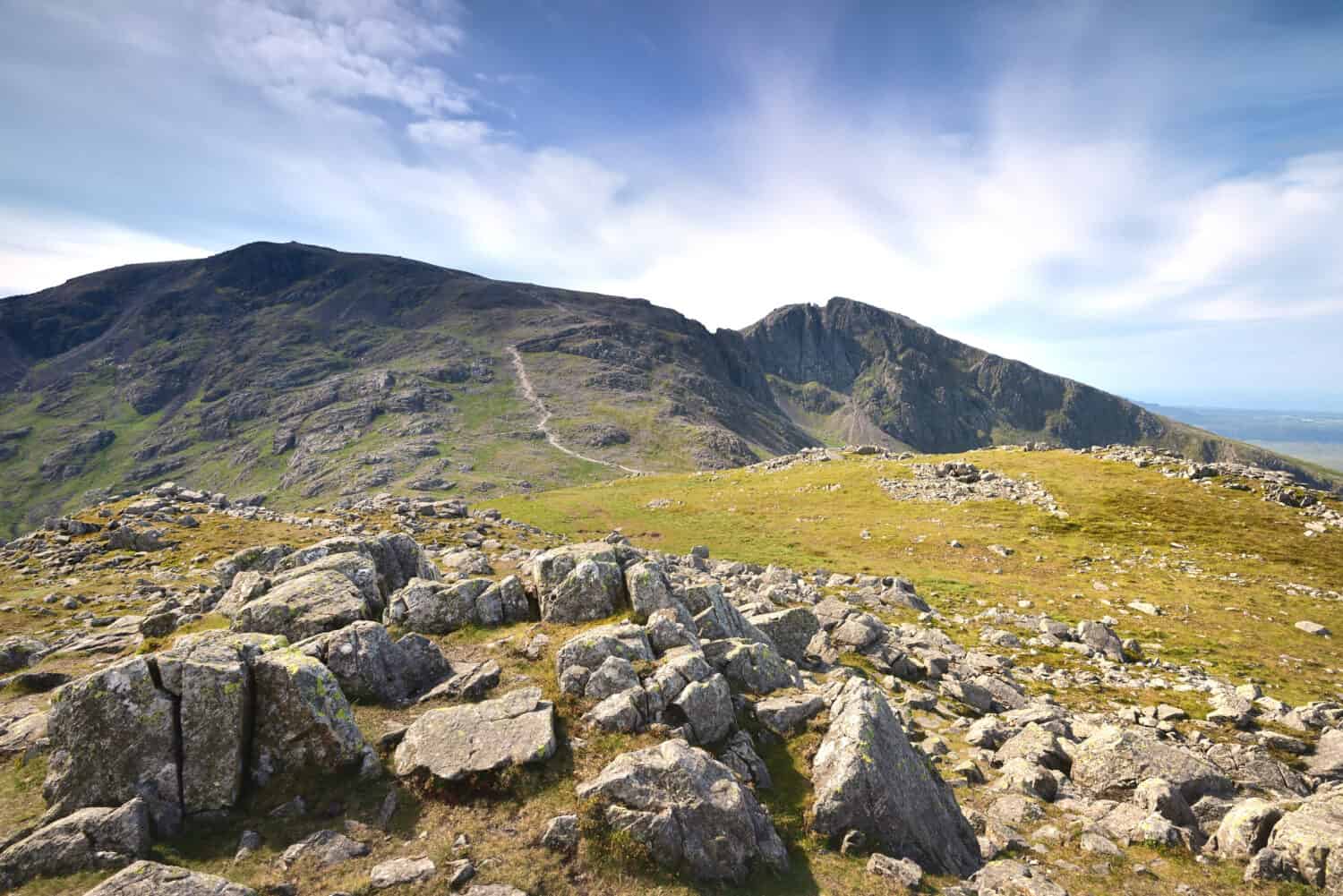
A view across the Mickledore ridge, from Scafell Pike to Sca Fell. Hikers can cross the ridge to see both summits in a single trip, though traversing the Broad Stand buttress on the Sca Fell side can be very difficult and dangerous.
©Drew Rawcliffe/Shutterstock.com
Helvellyn – 3,117 ft. (950 m)
Helvellyn, also in the Lake District, is popular among hikers as well. Standing at 3,117 feet in height, it is England’s third tallest mountain. Helvellyn is, in general, much easier to traverse than Sca Fell and Scafell Pike and can be reached on all sides via a number of routes.
The western ascent is much gentler compared to the routes along the eastern side. In the East, the Striding Edge route offers hikers steep cliffs, sharp ridges, rock scrambles, and plenty of dramatic views. In the north sits Red Tarn, which holds a population of the rarest fish in the UK, the schelly.
Rare species of arctic-alpine plants and animals call Helvellyn their home as well. The mountain ringlet butterfly is one such species. Alpine saxifrage and alpine mouse-ear, two rare plant species grow in the range, but nowhere else in England. Conservation efforts are made by organizations like the John Muir Trust and Fix the Fells to preserve these and other mountain woodland species.
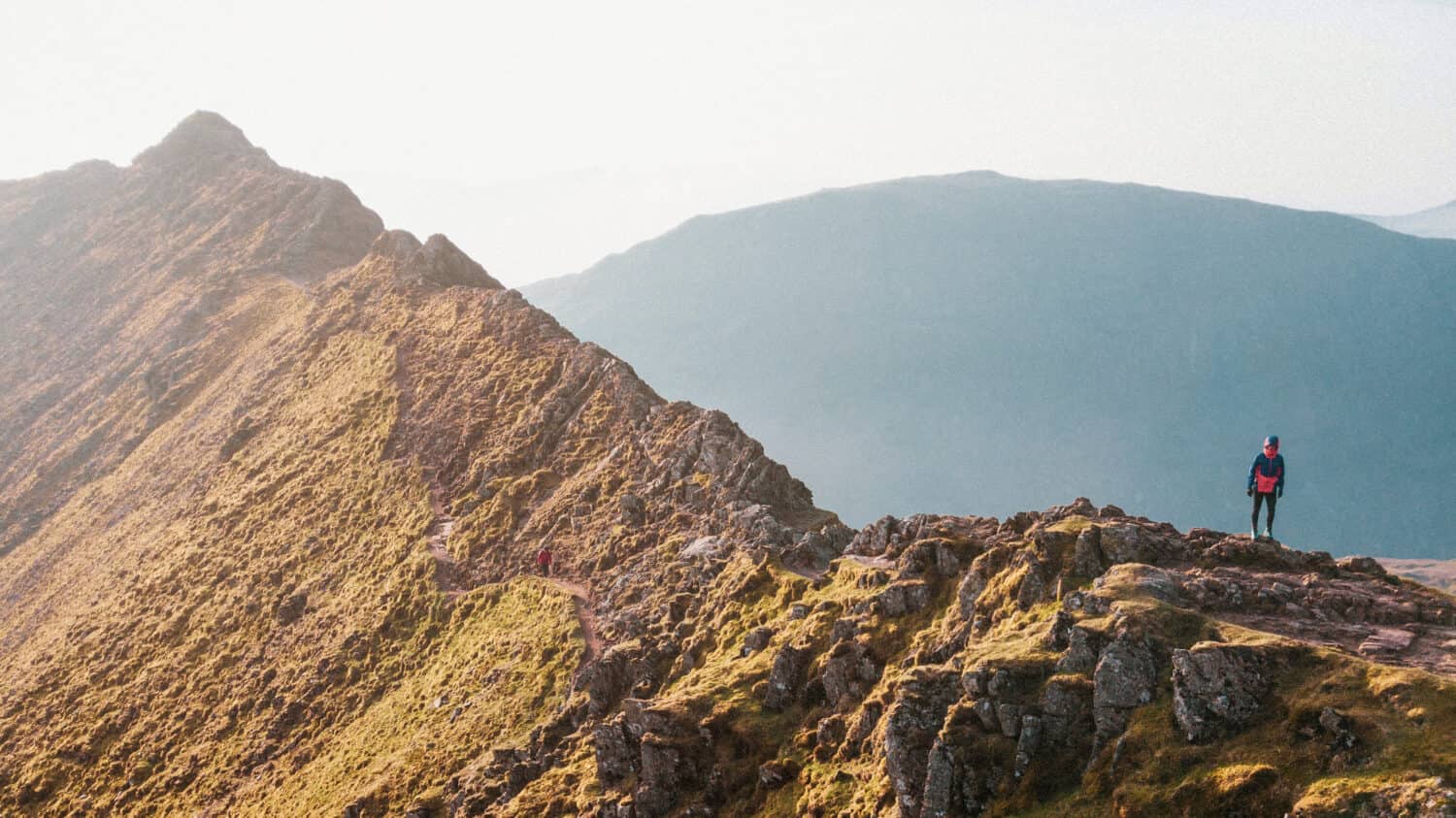
The approach of Helvellyn from the eastern side affords hikers many dramatic views as they traverse the sharp ridge.
©Rawpixel.com/Shutterstock.com
Ill Crag – 3,068 ft. (935 m)
As part of the same range as Scafell Pike, Ill Crag is also among the tallest mountains in England. Its peak is not much shorter than that of Helvellyn, standing proud at about 3,068 feet above sea level. Offering very steep but traversable rock faces, especially on its southeastern side, Ill Crag is a popular destination for rock climbers. From the southeastern face, above the Great Moss flats, climbers can ascend nearly 1300 feet to the summit and from there rejoin the well-worn paths that lead to Scafell Pike.
After summiting Ill Crag, climbers can look down on the Great Moss they have just ascended from and appreciate views of the surrounding range. The heights offer incredible views of the valley below, including a very long stretch of the River Esk. The river originates further north, between the peaks of Great End and Esk Pike. It flows from just below the mountain pass, Esk Hause, and continues southwest, where it forms an important estuary at the Eskmeals Dunes before emptying into the Irish Sea.
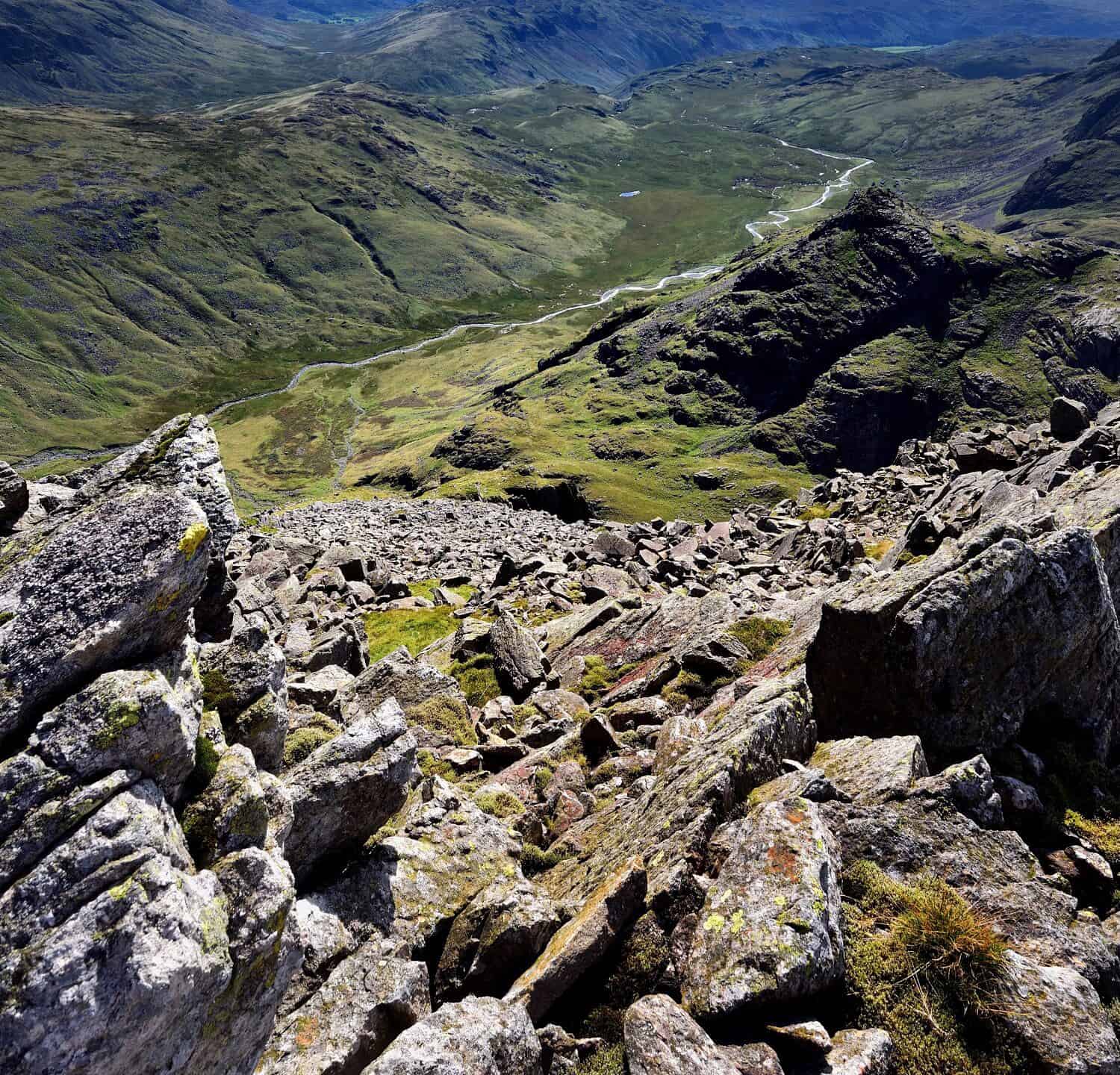
The peak of Ill Crag offers hikers stunning views of the River Esk, as well as the ranges and tarns that fill the Lake District National Park.
©Drew Rawcliffe/Shutterstock.com
Broad Crag – 3,064 ft. (934 m)
The peak of Broad Crag is just a skip away from that of Ill Crag. The two are incredibly close in height and distance, with Broad Crag topping out just 4 feet shy of its sibling. At 3,064 feet in elevation, it is England’s fifth-tallest mountain peak. It is often overlooked in favor of the taller points in close proximity, although for the avid hiker, it is a convenient stop on the way to Scafell Pike and shouldn’t be missed.
In 1932, the Fell and Rock Climbing Club gifted the mountain to the National Trust. Formed in 1906, the FRCC has since been the premier climbing club of the Lake District. The group publishes and periodically revises over a dozen guides to climbing the various mountains and rock features of the ranges within the park.

Part of the same chain, the route from Broad Crag and Ill Crag to Scafell Pike is rather short — only about 450 yards.
©Drew Rawcliffe/Shutterstock.com
Summary of the 5 Tallest Mountains In England
| Rank | Mountain | Elevation in feet (meters) |
|---|---|---|
| 1 | Scafell Pike | 3209 ft. (978m) |
| 2 | Sca Fell | 3,163 ft. (964m) |
| 3 | Helvellyn | 3,117 ft. (950m) |
| 4 | Ill Crag | 3,068 ft. (935m) |
| 5 | Broad Crag | 3,064 ft. (934m) |
The photo featured at the top of this post is © Pajor Pawel/Shutterstock.com
Thank you for reading! Have some feedback for us? Contact the AZ Animals editorial team.







